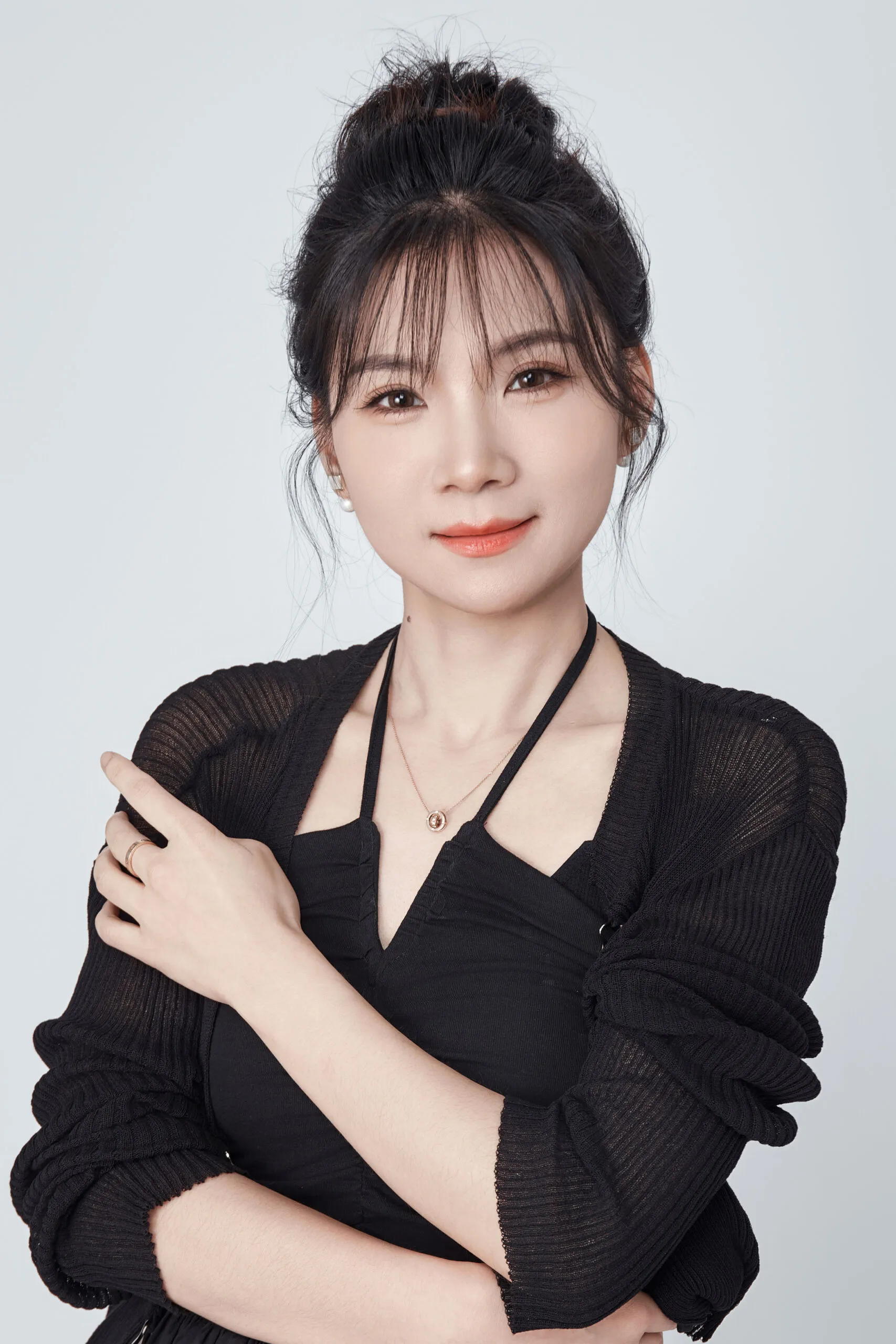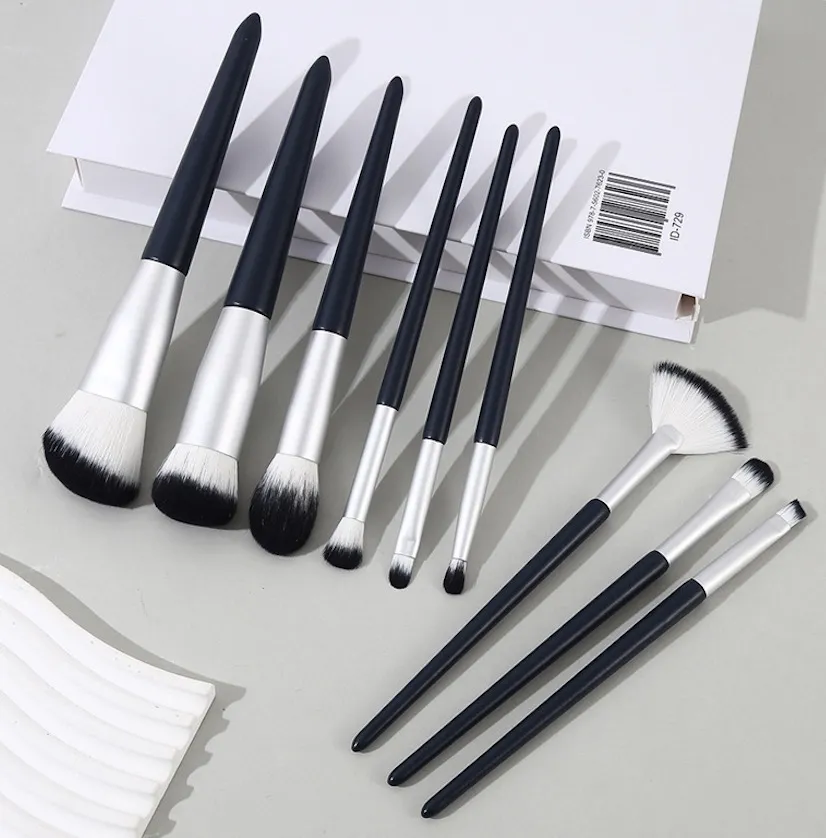Your customers want ethical products1. But the truth behind "natural" brush hair is often hidden. I’ll help you navigate the risks and find a solution that protects your brand.
Squirrel hair in brushes often comes from opaque supply chains linked to the fur trade. Without an audited chain-of-custody, you cannot guarantee a no-kill origin. Choose verified vegan/synthetic bristles2 to meet ethics and compliance while matching performance.
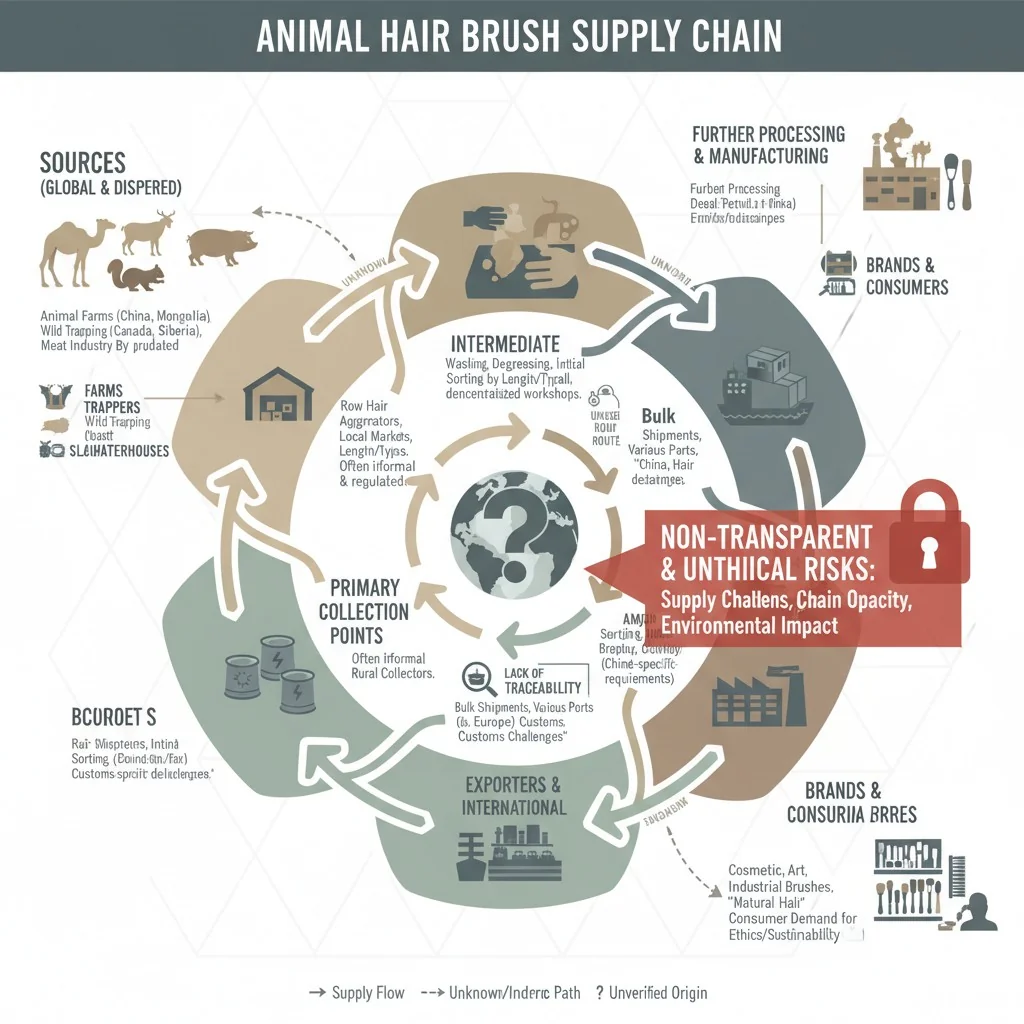
As a brand founder, you’re responsible for every claim you make. When I started on the factory floor, I saw firsthand how materials arrive from countless sources. It’s almost impossible to trace a bundle of animal hair back to its origin. This lack of transparency3 is a huge risk for brands like yours that are built on trust and quality. You need to know exactly what’s in your products and be able to stand behind them. Let’s break down what that means for squirrel hair brushes and what you can do about it.
All squirrel hair for brushes is harvested by gently shearing live animals.False
While shearing is a possible source, a significant portion of animal hair is a byproduct of the global fur trade and trapping industries, where animals are killed. Verifying a 'no-kill' origin is extremely difficult.
The global fur farming industry, a source for brush hair, still involves tens of millions of animals annually despite recent declines.True
Data shows that even with sharp drops, fur farm output in 2024 from Europe and China combined was over 18 million animals, not including rabbits or trapped wildlife. This creates a massive supply of hair with untraceable origins.
How does squirrel hair actually get into makeup brushes?
Your supplier says the hair is "ethically sourced," but what does that mean? The supply chain4 is murky, and these claims are rarely backed by proof. Let’s look at the real sourcing channels.
Sourcing varies from shearing to trapping, but most animal hair enters a complex global trade where it co-mingles with fur industry byproducts. This makes end-to-end verification nearly impossible, and "cruelty-free hair" claims become a major compliance risk5 for your brand.
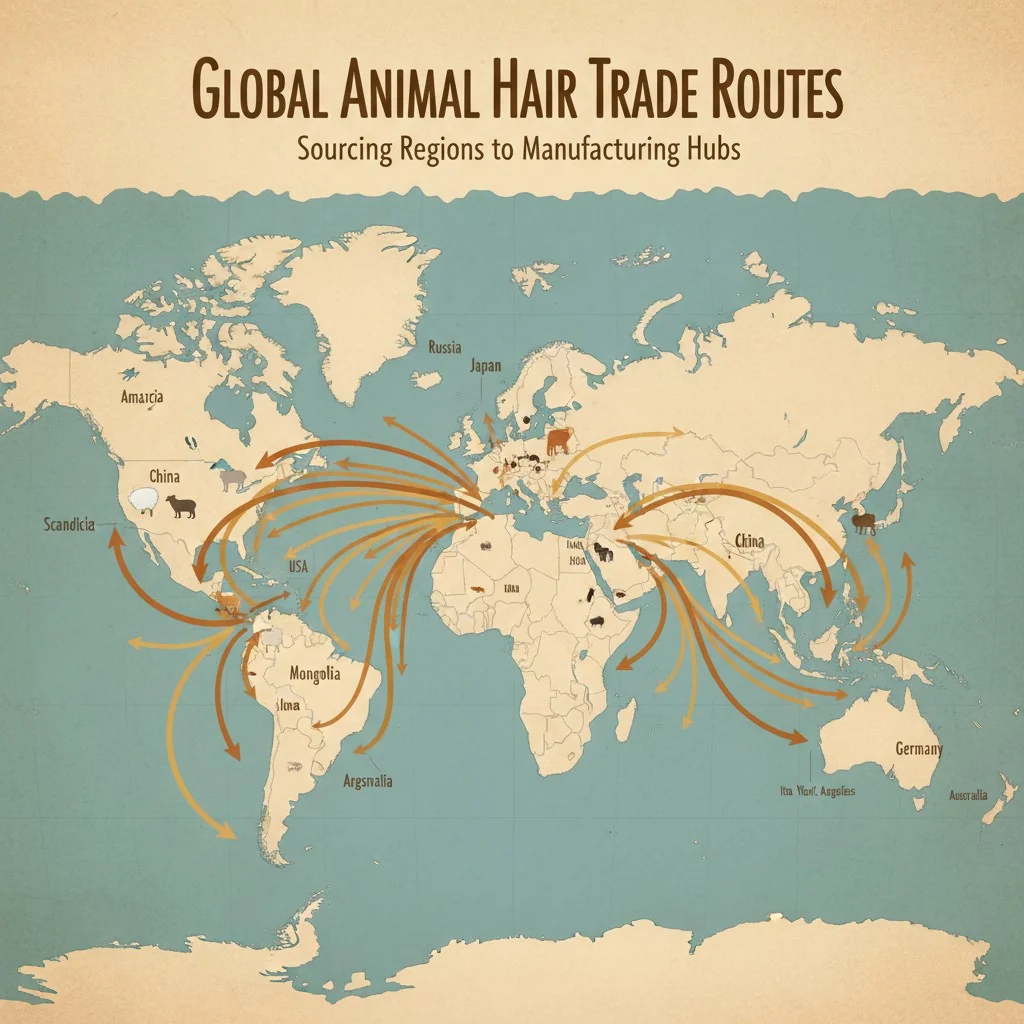
When you’re building a brand, you can’t afford to guess. You need facts. The journey of squirrel hair from the animal to your brush handle is rarely a straight line. It passes through many hands, and its true origin often gets lost. As someone who manages production, I can tell you that materials are often bought in large lots from brokers. These brokers mix hair from different sources to meet a certain quality or price point. This is why a simple supplier declaration is not enough. You need to dig deeper.
The Sourcing Channels You Aren’t Told About
- Fur Trade Byproducts: The global fur industry is the largest source. Animals are raised and killed for their pelts. The tail hair, which is ideal for brushes, is a secondary product. It’s sold into a separate supply chain, but its origin is tied to a killed animal.
- Trapping: Wild squirrels are trapped and killed for pest control or their pelts. The hair is then collected and sold. This process is far from humane and completely unregulated in many regions.
- Shearing/Harvesting: This is the "no-kill" story many brands hope for. In some cases, hair might be collected from live animals. However, this is the rarest and most expensive method. It is not the standard for mass production.
Your Chain-of-Custody Checklist
If a supplier claims their animal hair6 is "no-kill," ask for proof. Here is what you should request:
- Source Location: The specific farm or region.
- Collection Method: A documented process (e.g., video of shearing).
- Species Verification: Lab tests to confirm it’s not a cheaper, mislabeled hair.
- Third-Party Audit: A certificate from an independent body.
If they can’t provide this, you can’t safely make the claim.
The number of animals farmed for fur has increased in the last decade.False
Global fur farm output has declined sharply. For example, in 2014, Europe and China produced over 130 million pelts combined. By 2024, that number fell to around 18 million. However, it's still a massive industry.
Hair from different animals, like weasel and squirrel, is often mixed and mislabeled by suppliers.True
Mislabeled animal hair is a known problem in the industry. Terms like 'sable' or 'kolinsky' are often used incorrectly for cheaper weasel or squirrel hair, creating compliance and quality control issues for brands.
Are synthetic brushes as good as squirrel hair?
You need that luxurious, soft feel for your powder brushes. You worry that synthetics will feel cheap or perform poorly. The good news is that technology has caught up, and you no longer have to choose.
Modern synthetic fibers7 can absolutely match the performance of squirrel hair. Advanced PBT filaments with engineered tips offer the same soft, sheer application your customers love. Plus, they provide better hygiene, durability, and complete ethical peace of mind for your brand.
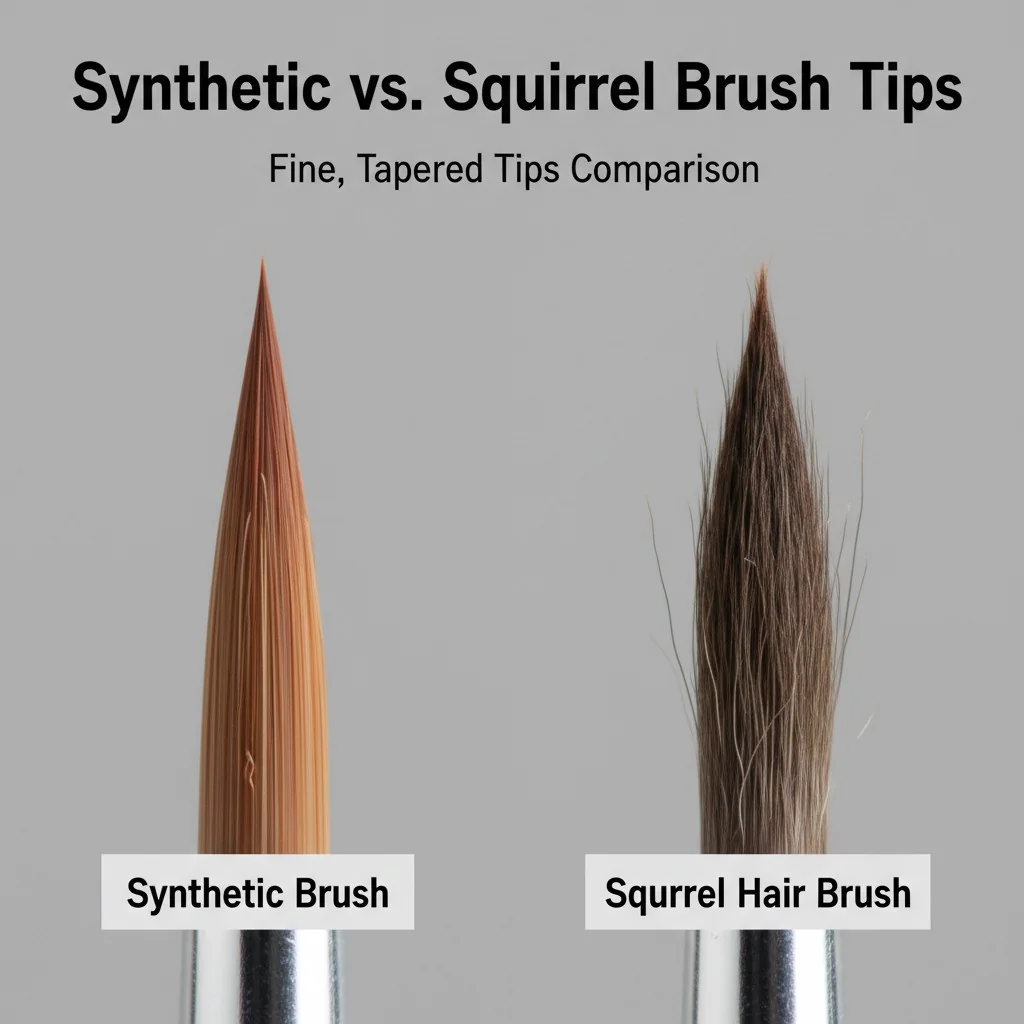
I remember when "synthetic" meant stiff, plastic-y bristles that couldn’t pick up powder. Those days are long gone. For my clients, especially brand founders like you who focus on a premium customer experience, performance is everything. We now have access to next-generation synthetic fibers that are specifically engineered to mimic the best qualities of animal hair. We can customize the denier (thickness), taper, and even add surface texture to the fibers to achieve the exact pickup and laydown you want for a specific formula, whether it’s a sheer finishing powder or a pigmented blush.
Performance Matchup: Natural vs. Next-Gen Synthetic
Let’s compare them directly. Squirrel hair is known for its fine, non-porous structure, which gives a soft, sheer application. Modern synthetics replicate this.
| Feature | Squirrel Hair | Next-Gen Synthetic (PBT/Taklon) |
|---|---|---|
| Softness | Extremely soft, delicate | Can be engineered to be equally soft |
| Powder Pickup | Excellent for sheer application | Excellent; can be customized for sheer or heavy pickup |
| Durability | Fragile; prone to shedding/breakage | Very durable; bristles maintain shape |
| Hygiene | Porous; can trap bacteria, hard to clean | Non-porous; easy to clean, dries fast |
| Ethics | High risk; linked to fur trade | 100% Vegan and cruelty-free8 |
| Consistency | Varies by animal and batch | 100% consistent from brush to brush |
The key is in the technology. We use fibers with ultra-fine, tapered tips and sometimes add a "crimp" or surface etching. This creates texture that grabs powder just like a natural hair cuticle, but without any of the ethical or hygienic downsides.
Synthetic brushes are always less soft than real squirrel hair brushes.False
Modern synthetic fibers, like high-grade Taklon or PBT, can be manufactured with extremely fine, tapered tips that replicate the softness and flexibility of squirrel hair. Many users cannot tell the difference in a blind test.
Synthetic brushes are more hygienic and easier to clean than animal hair brushes.True
Synthetic bristles are non-porous, so they don't absorb oils or pigments. This makes them easier to wash thoroughly and less likely to harbor bacteria, which is a major benefit for consumers.
How can my brand make safe, compliant claims about brushes?
You want to market your brushes as ethical. But using the wrong words like "cruelty-free hair" can put your brand at risk in key markets. The solution is to use clear, verifiable language.
Focus on claims you can prove, like "100% Vegan" or "All-Synthetic Bristles." Avoid unregulated terms for animal hair. With fur bans in places like California and the EU, regulators are watching closely. Strong documentation is your best defense against compliance issues.
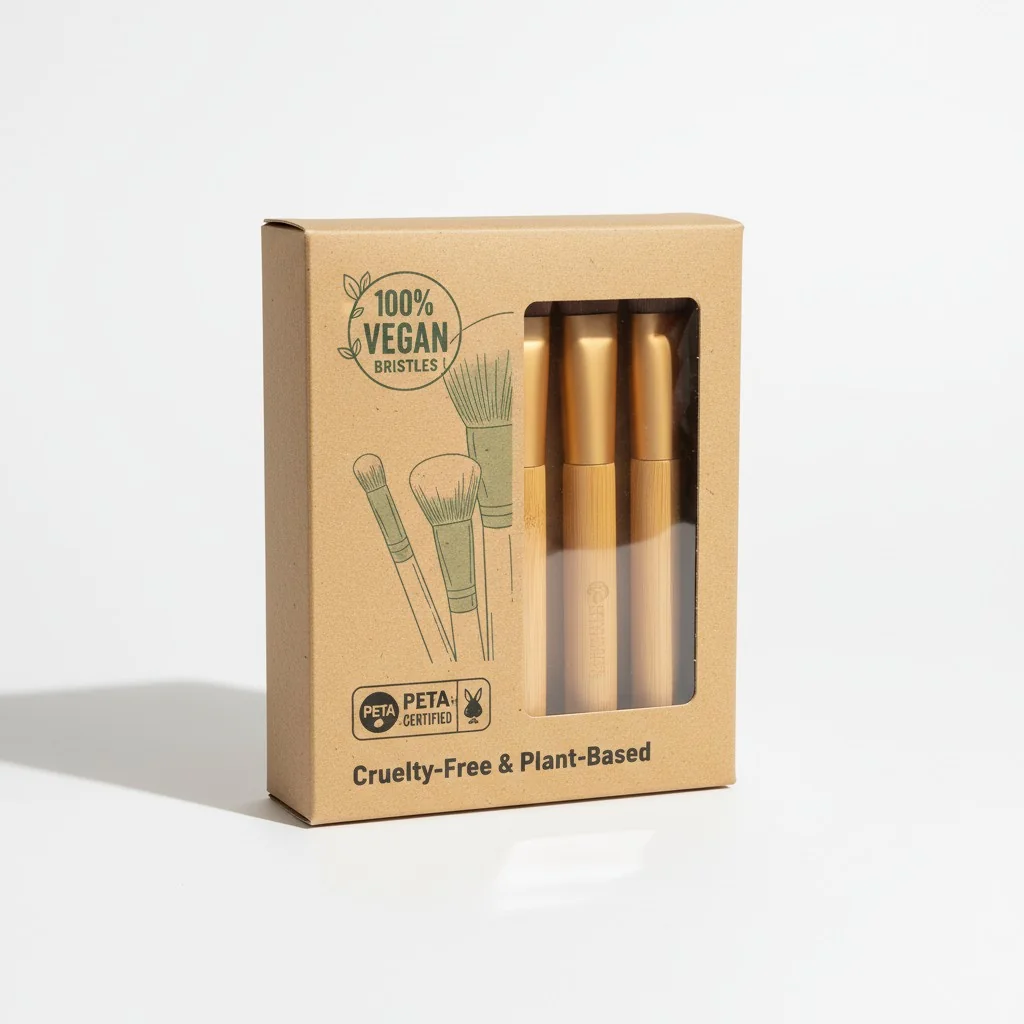
For brand founders selling in the US and EU, this is not just about marketing. It’s about legal compliance. I’ve seen brands face serious backlash for making claims they couldn’t back up. The term "cruelty-free" is a perfect example. While it has a clear meaning for finished products (no animal testing), it has no legal or regulated definition for animal hair sourcing. Anyone can say it, but almost no one can prove it. This creates a huge risk for your brand’s reputation. The safest path is to move away from ambiguity and toward certainty.
Safe Claims vs. Risky Claims
- Safe Claim: "100% Vegan". This is a clear, verifiable statement. It means the product contains no animal-derived ingredients. This is the gold standard.
- Safe Claim: "Synthetic Bristles". This is a factual statement about the material. It’s honest and transparent.
- Risky Claim: "Cruelty-Free Hair". This is unregulated and implies a standard of animal welfare that is nearly impossible to audit in the brush hair supply chain.
- Risky Claim: "Ethically Sourced Hair". This is a vague marketing term with no standard definition. Avoid it unless you have a full, third-party audited chain-of-custody report.
Global Regulations Are Tightening
Don’t forget that rules are changing. Over 20 European countries have already banned or restricted fur farming. The entire EU is considering a full ban. In the US, states like California have banned the sale of new fur products. While makeup brushes may not always be the primary target, using animal hair links your product to this controversial industry and increases your compliance risk.
Your Compliance Documentation Pack
For every brush you produce, you should have a file with:
- A supplier declaration stating the exact material (e.g., "PBT Synthetic Fiber").
- For vegan claims, a signed confirmation of no animal-derived materials.
- Any third-party certifications (e.g., PETA, Vegan Society).
The term 'cruelty-free' has a legally protected, universal definition for animal hair sourcing.False
Unlike 'cruelty-free' for finished product testing, there is no regulated or universally accepted standard for how animal hair is sourced. The claim is easy to make but nearly impossible to verify, making it a risk.
Several countries and regions, including the EU and California, have restrictions or bans on fur farming and sales.True
These regulations increase scrutiny on all products containing animal hair, creating potential compliance and market access risks for brands using materials like squirrel, mink, or badger hair.
How can I switch to synthetics without hurting my brand’s luxury feel?
Your brand is known for its premium quality. You’re worried that "vegan" will sound like a compromise to your customers. The key is to frame the switch as an innovation, not a downgrade.
You can elevate your brand by shifting to verified synthetics. This involves a clear playbook: set precise fiber specifications, run performance tests, focus on luxury handle finishes, and craft a marketing story around high-performance, ethical technology. This protects you from risk and strengthens your brand identity.
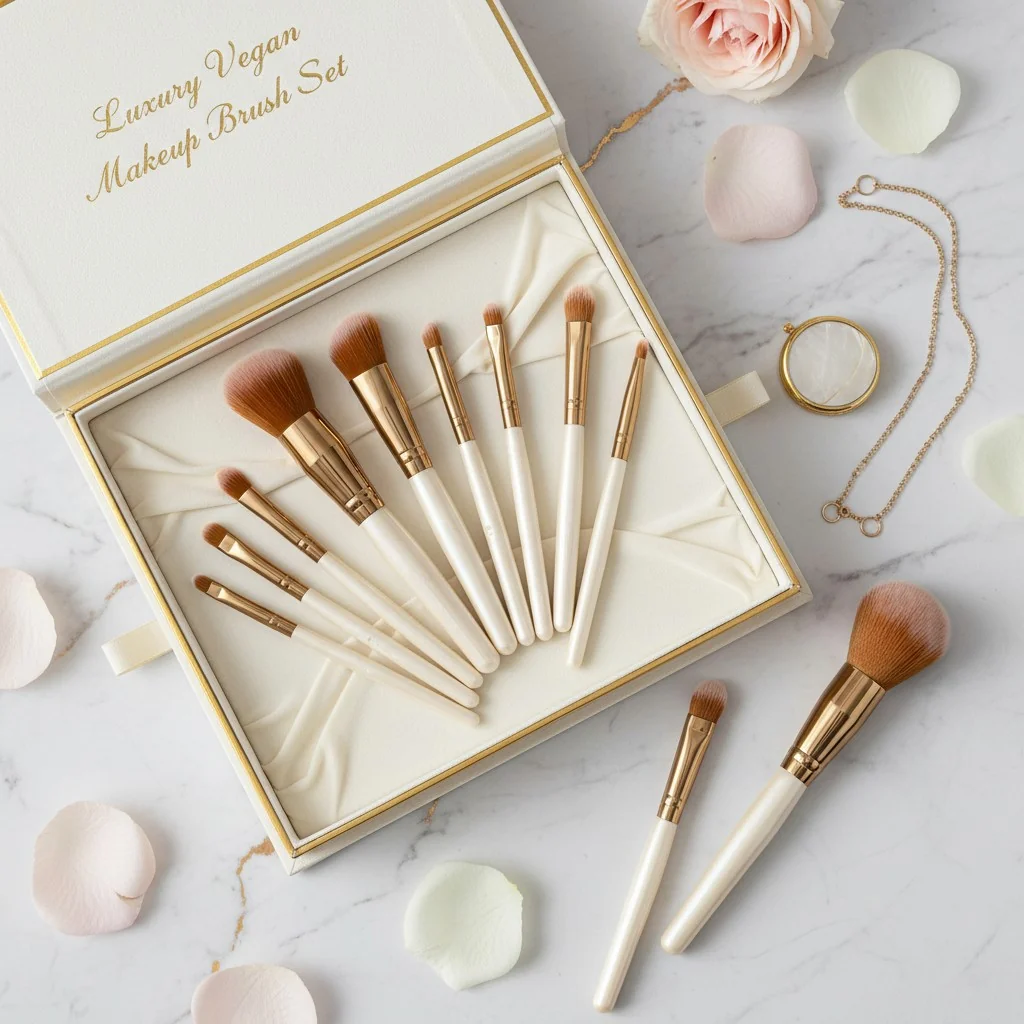
The fear of losing that "luxury" feel is something I discuss with founders all the time. But luxury today is about more than just an old-world material. It’s about thoughtful design, superior performance, and values that align with the modern consumer. The story of badger hair brushes is a powerful lesson here.
The Badger Hair Case: A Warning for All Brands
A few years ago, investigations revealed horrific cruelty in the badger hair supply chain, where animals were illegally trapped and violently killed. The news caused a massive consumer backlash. In response, dozens of major beauty brands publicly banned badger hair and switched to synthetics. They didn’t lose their luxury status. Instead, they were praised for taking a stand. This case shows that the biggest risk to your brand isn’t switching to synthetics—it’s failing to do so.
Your 4-Step Playbook for a Seamless Transition
Here is the exact process I use with my clients to ensure the new brushes are even better than the old ones:
- Build a Material Policy: We start by officially phasing out animal hair. Then, we create a "spec sheet" for each brush. We define the exact synthetic fiber needed: the denier (softness), the length of the taper (for application), and the surface texture (for pickup).
- Run Side-by-Side Samples: We produce samples of the new synthetic brushes. Then, you and your team can perform blind tests against your old squirrel brushes. You can validate the softness and test the powder application on skin.
- Elevate the Aesthetics: We shift the focus of "luxury" to the parts of the brush you can control. Think of weighted, soft-touch handles, unique ferrule colors, and beautiful, sustainable packaging. The entire product feels premium.
- Craft Your Marketing Story: We help you develop language that passes legal review. You can talk about "next-generation vegan fibers," "innovative performance," and your commitment to "conscious luxury." You are upgrading your technology, not compromising your quality.
Switching to synthetic brushes will damage a luxury brand's reputation.False
Many high-end brands have successfully transitioned to 100% synthetic brushes, framing the move as an upgrade to innovative, ethical, and higher-performance tools. The reputational risk of being tied to animal cruelty is far greater.
Brands can specify synthetic fiber characteristics like denier, taper, and crimp to replicate the performance of specific animal hairs.True
OEM/ODM manufacturing allows for precise customization of synthetic fibers. By defining these technical specs, a brand can engineer a brush for a specific function, like sheer powder application or dense pigment packing.
Conclusion
Switching to verified vegan brushes protects your brand from ethical and compliance risks. It also delivers the high-performance, luxury feel9 your customers expect. Let’s build your next collection together.
References
-
Explore the importance of ethical products in beauty and how they impact consumer choices. ↩
-
Discover how vegan and synthetic bristles can match or exceed the performance of animal hair. ↩
-
Transparency builds trust with consumers and ensures ethical practices in sourcing. ↩
-
Understanding the supply chain is crucial for ensuring ethical sourcing and transparency. ↩
-
Learn about the potential legal and ethical compliance risks brands face in sourcing materials. ↩
-
Investigate the ethical concerns and sourcing challenges associated with animal hair. ↩
-
Find out how modern synthetic fibers can provide similar or superior performance to natural hair. ↩
-
Understand the implications of cruelty-free claims and their importance in consumer choices. ↩
-
Explore strategies for brands to retain luxury appeal while using synthetic materials. ↩

